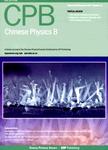版权所有:内蒙古大学图书馆 技术提供:维普资讯• 智图
内蒙古自治区呼和浩特市赛罕区大学西街235号 邮编: 010021

作者机构:Department of AutomationTsinghua University Institute of Public Safety ResearchTsinghua University Department of Electrical and Computer EngineeringUniversity of Connecticut
出 版 物:《Chinese Physics B》 (中国物理B(英文版))
年 卷 期:2015年第24卷第6期
页 面:687-693页
核心收录:
学科分类:03[法学] 08[工学] 0837[工学-安全科学与工程] 0838[工学-公安技术] 0306[法学-公安学] 081202[工学-计算机软件与理论] 0812[工学-计算机科学与技术(可授工学、理学学位)]
基 金:Project supported by the National Basic Research Program of China(Grant No.2012CB719705) the National Natural Science Foundation of China(Grant Nos.91224008,91024032,and 71373139)
主 题:building evacuation stair simulation cellular automata walk preferences
摘 要:As a physical model, the cellular automata (CA) model is widely used in many areas, such as stair evacuation. However, existing CA models do not consider evacuees' walk preferences nor psychological status, and the structure of the basic model is unapplicable for the stair structure. This paper is to improve the stair evacuation simulation by addressing these issues, and a new cellular automata model is established. Several evacuees' walk preference and how evacuee's psychology influences their behaviors are introduced into this model. Evacuees' speeds will be influenced by these features. To validate this simulation, two fire drills held in two high-rise buildings are video-recorded. It is found that the simulation results are similar to the fire drill results. The structure of this model is simple, and it is easy to further develop and utilize in different buildings with various kinds of occupants.